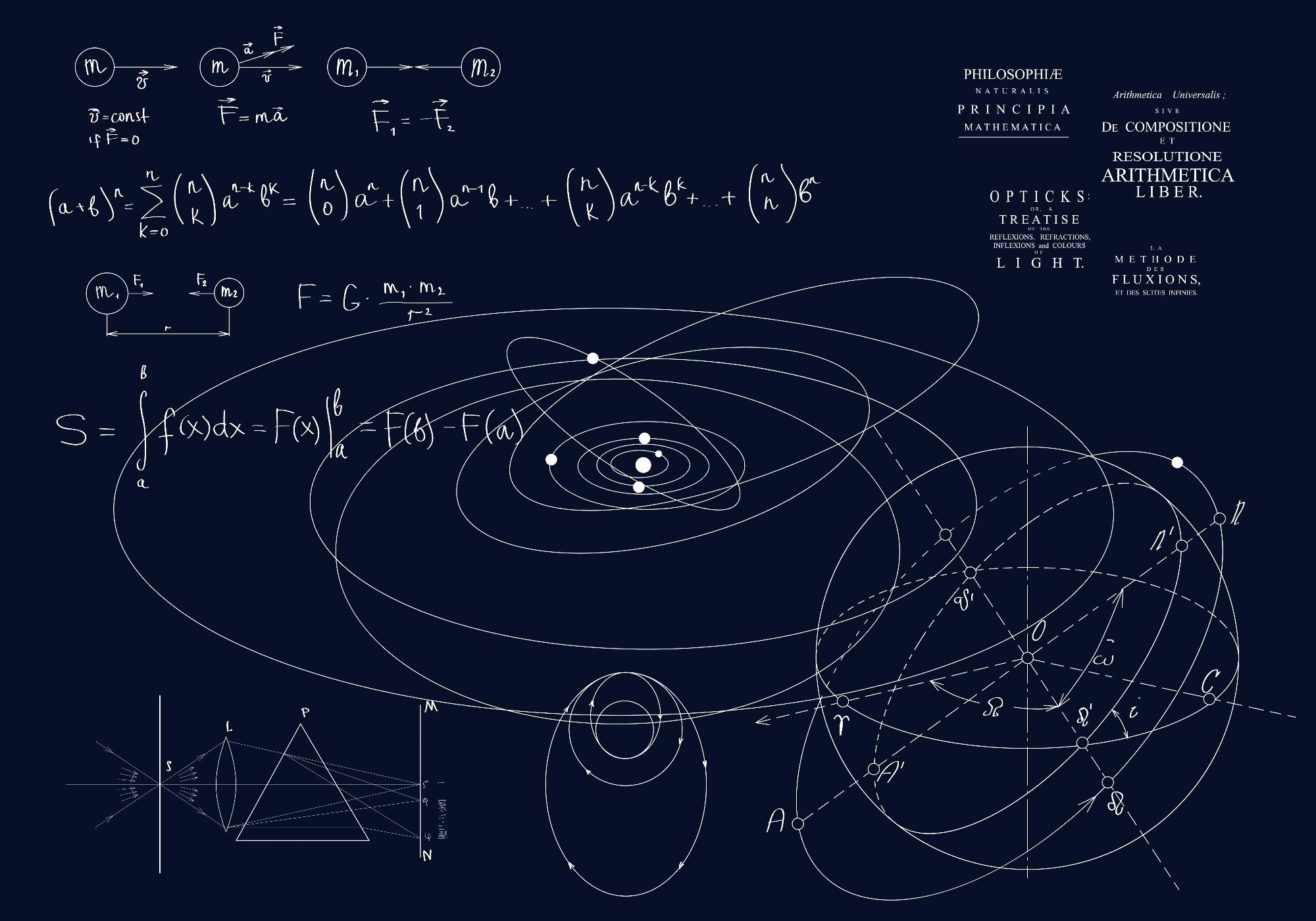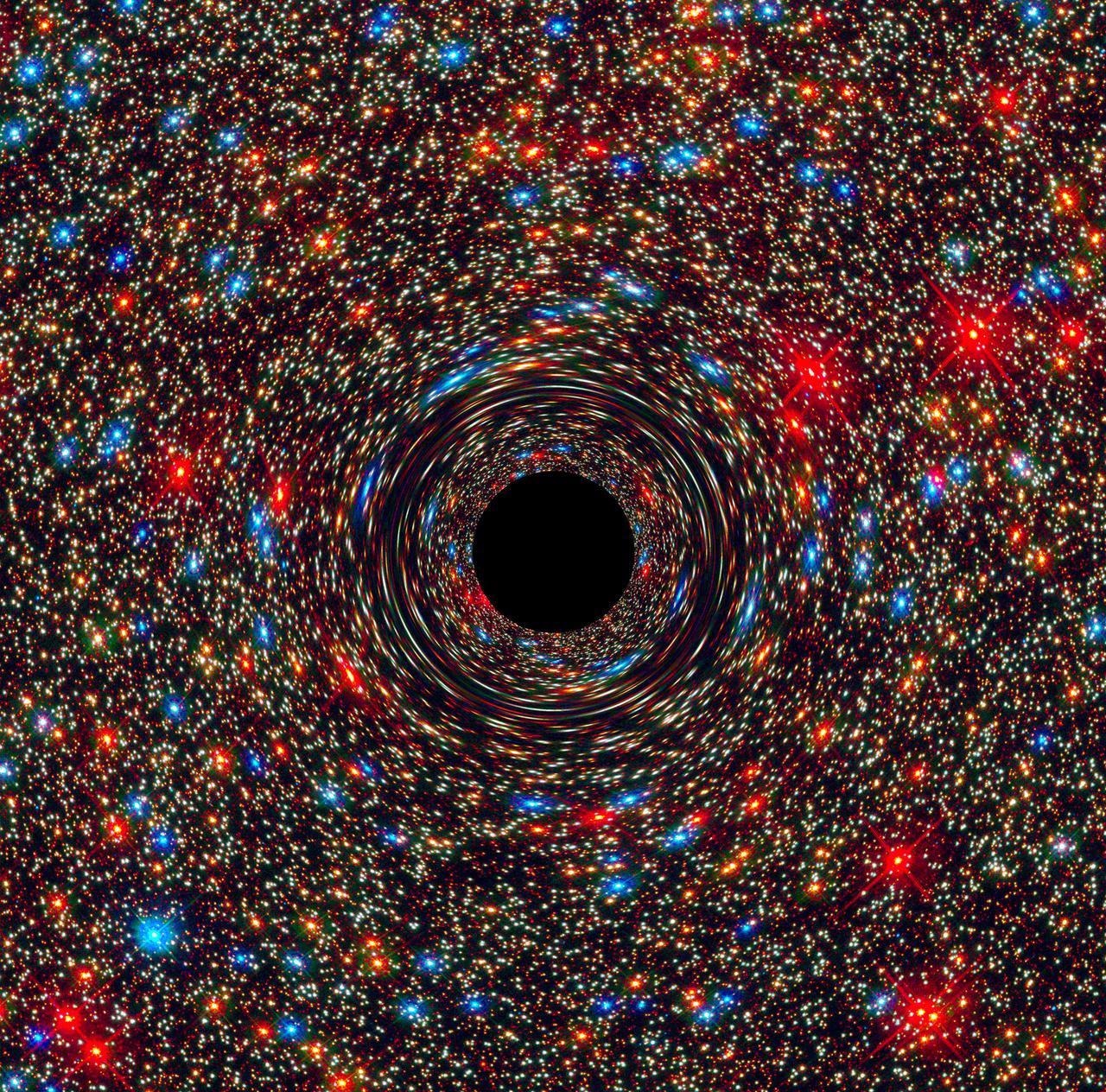AZoQuantum reached out to professor Daniel Persson to discuss quantum gravity and the use of theoretical physics to model our universe.
Could you please tell us about your background in theoretical physics and how you came to be involved with this research?
When I started University I originally intended to become an astronomer. I was always fascinated with the universe and loved pictures of galaxies and nebulas and I was intrigued by black holes and the big bang. During my studies, I came to realize that in order to describe all of these phenomena one needs mathematics.
So I became more and more fascinated with the interplay between mathematics and our universe. I wanted to understand how the fundamental laws of Nature worked and what kind of mathematics was involved to describe them.
To quote Einstein: “How can it be that mathematics, being after all a product of human thought which is independent of experience, is so admirably appropriate to describe the objects of reality?”
I pursued a Ph.D. in theoretical physics, during which I studied the mathematical properties of singularities in Einstein’s theory of gravity. Singularities appear in Einstein’s equations when trying to describe the interior of a black hole or the origin of our universe. It is generally expected that these problematic singularities will be “resolved” in a more fundamental “quantum theory of gravity” that combines Einstein’s theory with quantum physics. After my PhD I spent several years investigating various aspects of string theory, which is a candidate for a quantum theory of gravity.
As I took up my current position at the Department of Mathematical Sciences at Chalmers University of Technology, I started discussing these issues with Robert Berman, Professor at the Division of Algebra and Geometry. Tristan Collins, Assistant Professor at MIT, was visiting from Harvard at the time and also joined the discussions. We quickly realized that part of the mathematical research that Berman had previously done in complex geometry should be applicable to certain questions related to “emergent geometry” in quantum gravity. It took several years to work out the details of how this works. We now have the basic framework in play and we hope to extend our results in various directions in the future, both in physics and mathematics.
What does ‘quantum gravity’ refer to?
As far as we know there are four fundamental forces that govern the laws of the universe: the strong nuclear force, the weak nuclear force, the electromagnetic force, and the gravitational force. The strong nuclear force is responsible for holding the atomic nuclei together while the weak nuclear force is governing nuclear decay. The electromagnetic force is perhaps more familiar, controlling everyday phenomena such as electricity, magnetism, and light, which are all different sides of the same coin.
The fourth force, gravity, controls the attraction between massive bodies, such as the earth’s orbit around the sun or the large-scale structure of the galaxy. The first three forces belong together in the sense that they all work on the atomic scale, while gravity stands alone in its long-range action on planetary and galactic scales. This difference is also manifested in our mathematical description of these forces: the three forces that act on microscopic scales are all described by quantum mechanics, while gravity is described by a very different theory, namely Einstein’s general theory of relativity.

Image Credit: Lia Koltyrina/Shutterstock.com
In most situations it is perfectly fine to have these completely separate descriptions of our world: if we are interested in questions related to electricity, say, we need not care about the gravitational force since it is completely negligible compared to the electromagnetic force.
Take for example a small pebble lying in the palm of your hand. The molecules in your hand are tied together by electromagnetic interactions and these are preventing the pebble from falling through your hand toward the earth. Hence, the electromagnetic forces in your hand are easily counteracting the entire gravitational attraction of the earth. Similarly, if we are for example interested in calculating the orbital periods of an asteroid that is approaching earth, we can completely neglect the effects of the electromagnetic or nuclear forces.
However, there are situations where we cannot neglect either of the forces: inside a black hole, one has huge gravitational effects contained in a microscopic volume. A similar situation occurs when we try to describe the very early universe, or even the big bang itself. In these extreme situations, we need to replace our existing theory with a more fundamental theory in which both gravity and quantum effects work side by side. We call this sought-after theory, “quantum gravity’’.
Therefore, why has it been difficult to describe our universe on both a macro and micro scale simultaneously in the past?
As I mentioned, our description of the laws of Nature is separated into two distinct theories: quantum mechanics, governing microcosmos, and general relativity, describing the large-scale behavior of the universe. The problem is that these theories do not work well together.
Straightforward attempts at “quantizing” general relativity have been in vain. In the world of quantum physics, all elementary particles come in small units, or “quanta”. Take for example light, which classically can be described as electromagnetic waves that propagate through the air. Quantum mechanics teaches us that this is only an approximation of reality. In the quantum world, there is the smallest unit of light, the photon, which carries electromagnetic force. The collective state of a large number of photons behaves like a wave, hence the famous “wave-particle” duality of elementary particles.
It is expected that a similar phenomenon would hold for gravity: namely that the gravitational force would be submitted in the form of a particle, known as the graviton. However, Einstein’s description of gravity is very different; it is due to the curvature of spacetime due to the effect of massive bodies. In short, the earth is trying to move in a straight line, but it is orbiting the sun due to the curvature of spacetime caused by the mass of the sun. Thus, if we want to have a quantum description of gravity, we need to understand how the geometry of spacetime emerges from some underlying quantum state of gravitons. This has proven to be a challenging problem.
Please could you describe the ‘holographic principle' and how it relates to your research?
This is a principle that has been around for decades. One key piece of evidence for the holographic principle comes from the study of black holes. Black holes derive their name from the fact that their gravitational attraction is so large that nothing can escape from them, not even light. In order to be able to leave a massive body one much reach an acceleration that outweighs the gravitational pull. This is why we need large rockets to go into space; a fast airplane will not be able to reach a sufficiently high acceleration to leave the earth’s gravity. For a black hole, not even accelerating to the speed of light would be sufficient to escape, hence they are ‘black’. The region outside of a black hole where the 'point of no return’ happens is called the event horizon.

This computer-simulated image shows a supermassive black hole at the core of a galaxy. The black region in the center represents the black hole’s event horizon, where no light can escape the massive object’s gravitational grip. The black hole’s powerful gravity distorts space around it like a funhouse mirror. Light from background stars is stretched and smeared as the stars skim by the black hole. Credits: NASA, ESA, and D. Coe, J. Anderson, and R. van der Marel (STScI)
However, Bekenstein and Hawking taught us that this is not the end of the story. Taking into account quantum effects close to the black hole horizon reveals that they are not completely black after all! Black holes can radiate heat, like a normal body, an effect known as ‘Hawking radiation'. This means that black holes actually have a temperature.
Moreover, Bekenstein and Hawking showed that the temperature of the black hole is related to the area of the horizon. This is in contrast to our everyday lives where the temperature is derived from the total volume of particles in a body, e.g. the molecules in a room. Thus, somehow the information about the internal structure of the black hole is projected holographically onto its boundary. This is one of the indications that when combining the effects of gravity with quantum mechanics, the holographic principle kicks into play.
What is the dual gauge theory and how is it involved in this model?
The holographic principle is just what it says, a principle. In order to actually describe it precisely, or derive some implications from it, one needs a concrete mathematical model. Such a model was proposed by Maldacena in 1997, dubbed the 'AdS/CFT correspondence'. The original model derives from string theory, but it has since then found applications and developments outside the realm of string theory. In short, the AdS/CFT correspondence states that a certain gravitational theory in 5 dimensions is equivalent to a quantum theory (without gravity) on the 4-dimensional boundary of spacetime. In principle, this allows us to deduce the effects of quantum gravity, such as the properties of black holes, from the quantum theory living on the boundary.
Juan Maldacena - Why is Quantum Gravity Key?
Video Credit: Closer To Truth/Youtube.com
However, the precise details of this map are complicated to work out. In the original model of Maldacena, the gravitational theory lives in the so-called “Anti-de Sitter space”, which is spacetime analog to the shape of a saddle. In the language of differential geometry, which is the mathematical framework used to formulate Einstein’s general theory of relativity, we say that a saddle is ‘negatively curved’, in contrast to a sphere that is ‘positively curved’.
The boundary of this AdS-space is a 4-dimensional flat spacetime, which is where the quantum ‘gauge’ theory lives. The word ‘gauge’ is a little difficult to explain, but it refers to what kind of symmetries exist in the theory. In Maldacena’s model, the relevant gauge theory is a so-called 'conformal field theory', which means that it is unchanged when we perform rescaling of the equations.
To summarize, the AdS/CFT correspondence is a concrete realization of the holographic principle and provides a very powerful toy model for investigating quantum gravity.
How significant is advanced mathematics to this research?
Let me first of all say that mathematics plays a fundamental role in all theoretical physics. The laws of Nature are formulated using the language of mathematics. Topics such as differential geometry, functional analysis, and group theory are central to our formulation of general relativity and quantum theory.
During the development of the so-called standard model of particle physics in the latter part of the 20th century, experimental and theoretical discoveries were made in parallel and in close collaboration between theorists and experimentalists. When it comes to quantum gravity the situation is very different since we are currently unable to conduct experiments to directly test our theories.
When developing new theories one must instead rely on physical intuition, consistency with established theories, as well as mathematics. Explorations into quantum gravity have led to many new connections with parts of mathematics that were previously unknown to theoretical physicists. This creates a very exciting arena for cross-fertilizations between physics and mathematics, where ideas and discoveries on one side can lead to new developments on the other.
In our project, we see a prime example of such an interdisciplinary development. We showed how earlier results in a part of pure mathematics known as Kähler-Einstein geometry could be further developed and reinterpreted in terms of a model of quantum gravity.
How could a model of quantum gravity contribute to efforts to understand dark energy?
Well, the simple answer to this question is that we don’t know. The vast space between galaxies is often referred to as “empty space”, but this is misleading. Empty space represents the so-called “vacuum solution” to Einstein’s equations, meaning a solution in the absence of other matter. This solution describes the “vacuum spacetime geometry” of the universe, namely the large-scale geometric structure of our universe.
For example, Anti-de Sitter space that I mentioned above is an example of such a vacuum solution to Einstein’s equation. However, according to the laws of quantum mechanics, the vacuum is not really empty but should be subject to small quantum fluctuations where particles and anti-particles are created and annihilated within fractions of milliseconds. This is what is usually referred to as the “vacuum energy” of the universe. It is believed that it is this vacuum energy that is the driving force behind the accelerated expansion of the universe, meaning that it is a repulsive force that is counteracting the attractive pull of gravity which, alone, would cause the expansion of the universe to slow down, and possibly contract.
Further Reading: Direct Detection of Dark Energy
What is still unknown about quantum gravity?
As I have indicated, there are so many questions about quantum gravity that we cannot answer. Although this may seem frustrating it is also a source of excitement, since the universe still holds so many secrets for us to try and uncover. Many were expecting the Large Hadron Collider at CERN to discover new particles that could perhaps give us hints about some more fundamental unified theory, but unfortunately, that has not yet been realized.
At the same time, we have seen many amazing discoveries in astronomy and cosmology in recent years and it is quite possible that this is where we should look for signs of new physics beyond our current theories.
What are the wider implications of this research for understanding the nature of our universe?
I think it would presumptuous to try and make any claims in this direction. We are constantly testing and exploring new ideas and theories. We are excited about our result because it sheds new light on the phenomenon of emergent geometry, but we are of course well aware that this is within the context of a toy model and not yet applicable to our universe. It is common in theoretical physics to try and approach difficult problems in some simplified model, and hope that this could eventually give some hints to a more realistic situation.
Will you continue to research quantum gravity and a unified theory of the universe?
Yes, definitely! I have been investigating aspects of quantum gravity for many years and certainly expect to do so for many years to come. In the project with Berman and Collins we have now established a basic framework that we will explore further. We hope to use it to explore other aspects of quantum gravity, such as black holes.
Where can readers find more information?
Research paper: https://www.nature.com/articles/s41467-021-27951-9
About Daniel Persson

Daniel’s research centers around mathematical aspects of quantum gravity, often within the framework of string theory. He has investigated relations between black holes and automorphic forms, a branch of mathematics that connects harmonic analysis with group theory and number theory. In recent years he has also begun investigating the mathematics of AI, notably within the field of geometric deep learning.
Disclaimer: The views expressed here are those of the interviewee and do not necessarily represent the views of AZoM.com Limited (T/A) AZoNetwork, the owner and operator of this website. This disclaimer forms part of the Terms and Conditions of use of this website.